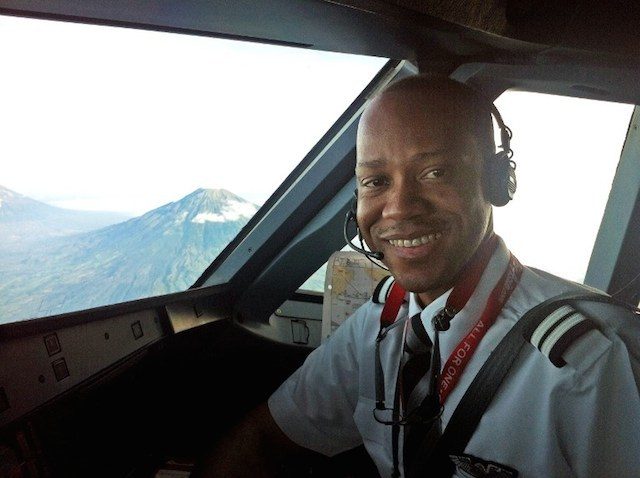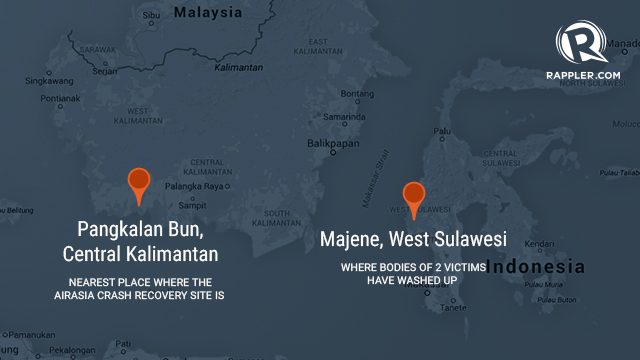SUMMARY
This is AI generated summarization, which may have errors. For context, always refer to the full article.

JAKARTA, Indonesia — The co-pilot of an AirAsia flight that crashed into the Java Sea last month was at the controls when it went down, killing all 162 people on board, investigators said Thursday.
The announcement came as fishermen found two more bodies from the crash in waters off Majene, Sulawesi, around 1,000 kilometers (600 miles) from where the plane crashed, a search and rescue official said.

AirAsia Flight QZ8501 went down in stormy weather on December 28 during what was supposed to be a short trip from the Indonesian city of Surabaya to Singapore. Only 72 bodies have so far been recovered. (READ: Hopes fade of finding more AirAsia crash victims)
Indonesian investigators have been analyzing data from the plane’s black boxes — the flight data recorder and the cockpit voice recorder — and this week submitted a preliminary report to the UN’s International Civil Aviation Organization.
On Thursday, the country’s National Transportation Safety Committee (KNKT) revealed that the French co-pilot, Remi Plesel, was flying the plane when the aircraft went down, rather than Captain Iriyanto, an experienced former fighter pilot.
“The second-in-command was the pilot flying,” chief investigator Mardjono Siswosuwarno told reporters in Jakarta, adding that the captain was monitoring the flight.
Another investigator, Ertata Lananggalih, said that the plane climbed sharply before crashing, echoing comments previously made by Transport Minister Ignasius Jonan.
In 30 seconds, it rose from 32,000 feet to 37,400 feet, then dipped to 32,000 feet, before descending for around three minutes when the black boxes stopped, he said.
Investigators also said there were towering cumulonimbus clouds in the area reaching heights of up to 44,000 feet at the time of the crash, although they declined to say whether the plane had flown into them.
Cumulonimbus clouds can cause severe turbulence for aircraft.
Siswosuwarno said that the plane was in good condition. (IN PHOTOS: The search for AirAsia QZ8501)
The preliminary report was not released but investigators said they hope to complete a final report in seven to eight months, which will be made public.
The military, which has provided most personnel and equipment for the hunt, withdrew from the search this week, saying that it could find no more bodies in the jet’s main section. The navy had also repeatedly failed to lift the badly damaged fuselage.
Indonesia’s civilian search and rescue agency is continuing the search for victims, but on a smaller scale. —Rappler.com
Add a comment
How does this make you feel?
There are no comments yet. Add your comment to start the conversation.